Popular games published by company Exidy
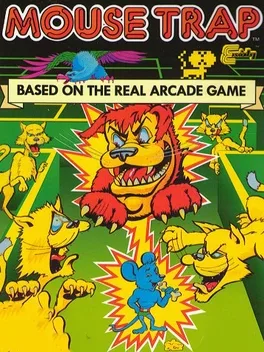
Mouse Trap is a 1981 arcade game released by Exidy, similar to Pac-Man. It was ported to three home systems by Coleco; Coleco's ColecoVision, Mattel's Intellivision, and the Atari 2600.
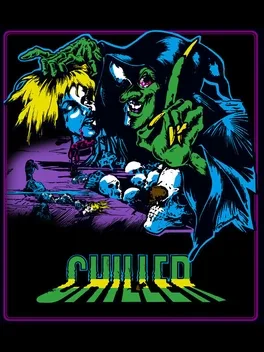
One of the most controversial games of the 1980's, Chiller was an arcade light-gun game. Banned in the UK, the player was tasked with torturing and murdering victims in various settings.
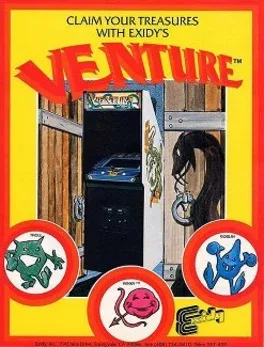
In Venture you control the adventurer Winky who sets out to collect treasure. You start out on an overview map of a dungeon which shows several rooms containing treasure. Since you cannot kill any enemies while rummaging through the dungeon corridors you have to dodge them on your way to the treasure rooms since they will kill you instantly. After entering one of the rooms you are able to fight the various monsters lurking in the rooms while you collect the treasure. Be careful not to linger to long in the treasure rooms because an "Evil Otto" like monster will appear which is invincible and will hunt you down until you leave the room again. After having collected every treasure in every room of a dungeon you move on to the next dungeon.
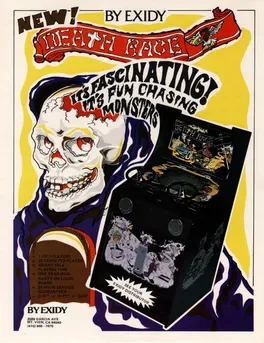
Death Race is a vehicular combat game that puts your car in an open space with gremlins. Your goal is the crash into the gremlins so you can brutally and cruelly kill them. Upon dying, they scream. In the spot where the gremlin once was, a cross-shaped gravestone will be left. This clutters the playing field, making it harder to move around. There are dotted lines on the sides, representing two narrow "safe" zones on the left and right sides of the screen for the gremlins, as your car will crash on contact with the dotted lines.
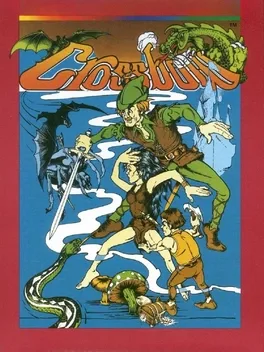
Players protect adventurers in this early light gun arcade game
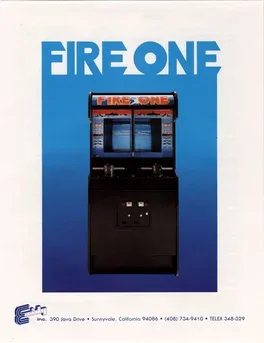
Fire One! was a player-versus-player or player-versus-computer submarine showdown, designed and programmed by David Rolfe, Ted Michon, and Susan Ogg for Exidy in 1979. The cabinet was split into two halves, with each player controlling their first-person submarine perspective on their half of the screen. The primary objective of the game is to find and destroy the enemy's submarine, while avoiding the enemy's torpedoes. Through your virtual periscope you are free to launch one of your 8 torpedoes to take out any of the enemy's various ships for extra points. It takes some time to reload each torpedo tube, so you must be judicious in how you plan your attacks. In addition to being able to control the left/right rotation of your periscope, the game also features a submerge button which you can use to temporarily hide from the enemy. Holding this button down keeps you hidden but also keeps you out of the action, allowing the enemy free reign over the seas.
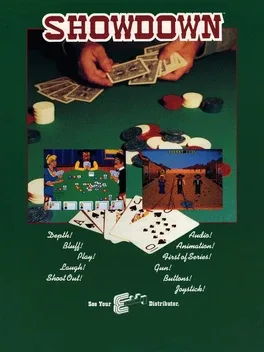
A shooting game with a Western motif. The player uses a gun, mounted to the cabinet, to play a game of poker with Tex (or Doc in some versions), Dolly and Rawhide.
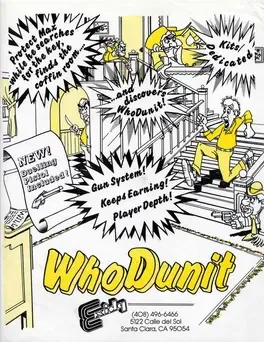
A murder mystery shooter where the player uses the gun (mounted to the cabinet) to protect Max from a variety of attacks as well as give him directions.
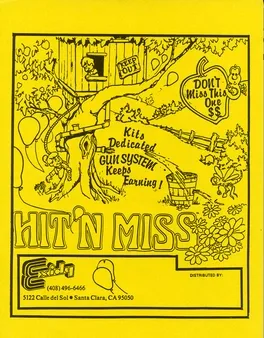
A rifle game where the player shoots the "bad" targets while avoiding the friendly/good targets. The game has a child-friendly theme with balloons, cuddly animals, etc.
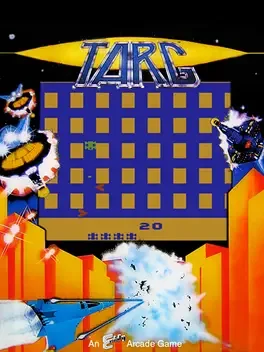
Targ is a one or two player shooter game released by Exidy in 1980. Your town is invaded by Targ riders, you must manouvre the heroic vehicle Whummel to destroy them. From time to time, a Spectar comes into screen, and can be destroyed for extra bonus. Action takes place into a 9x9 grid, "Crystal City", where the player's vehicle must avoid and chase down 10 enemy wedge-shaped vehicles. When all enemies are destroyed, you are awarded an extra bonus and can access the following level. Two players can alternate in the game. You use a 4 way joystick to control the Whummel, and a pushbutton to fire at enemies. Progressing in the gameplay causes the Targs to become faster and smarter, for a fast and furious gameplay. A small trivia on the game and characters name: apparently, Targ stands for Target, Spectar stands for Special Target. This game has a sequel, always released in 1980, Spectar.
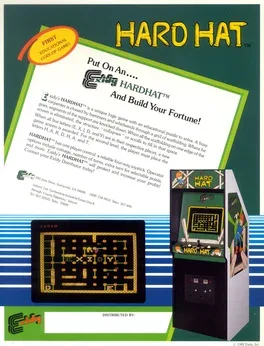
In this Maze game the letters forming the word "Hard Hat" are scattered throughout the maze. It is your task to pull them back in their oreiginal places while not being hit by the enemies.
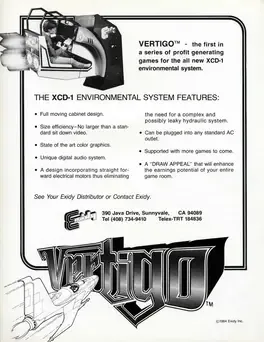
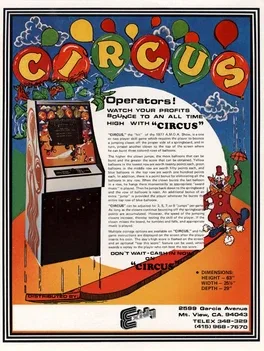
Circus was one of the first games produced by Exidy that used a CPU (6502) to control the game logic instead of hand-crafted hard-coded logic circuits. It ran on a black & white monitor with a color overlay that gave each row of balloons at the top of the screen a different color. It was designed and programmed by Edward Valeau and Howell Ivey of Exidy in 1977. Circus came in an upright dedicated cabinet, and may have also been available in a cocktail configuration as well. Circus machines had white sides with red painted sideart of several balloons in flight. The front of the machine was decorated with a large ornate monitor bezel that also doubled as a marquee (or nameplate). This bezel showed several clowns in a circus scene and had the game title spelled out with multicolored balloons. The control panel was unadorned, save for an analog spinner and a start button. The whole machine was finished off in black T-molding. At least 13,000 units, possibly as many as 20,000, were produced.
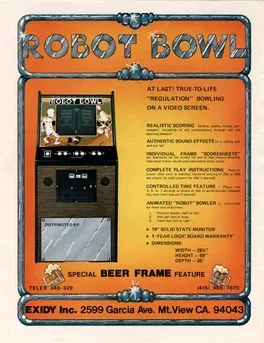
Robot Bowl was a black & white bowling alley game designed and programmed by Edward Valeau and Howell Ivey of Exidy. The game featured one or two robot bowlers playing with the standard bowling rules. To control the outcome, the game had five buttons: left, right, shoot, hook left, and hook right. "Hooking" the ball was the key to getting a good score, as you could only hook the ball after it had been thrown. This made it easy to pick up a spare, but the game made up for it by making splits very common. Robot Bowl was available in two different dedicated cabinets, an upright and a cocktail, both of them used the same internal hardware. The Robot Bowl upright was of the common 1970s 'short cabinet' design, as the machine had no marquee and was only as tall as the monitor. Some machines also had a decorative 'ball return' on the front at the very bottom of the cabinet. There is an interesting story behind that. At the time the game was created, Exidy had just purchased Fun Games and had a number of cabinets left over from one of Fun's driving games. They used these cabinets to get Robot Bowl into production quickly. The only problem was that the cabinets had a hole in the front where the gas pedal had been. Michael Cooper-Hart suggested that they silk-screen the words 'Ball Return' over the hole. The Robot Bowl cocktail was a square box with a perfectly round top. The player controls were on either side of the monitor (and you actually had to look at the game sideways to play). This machine had no decoration of any kind.
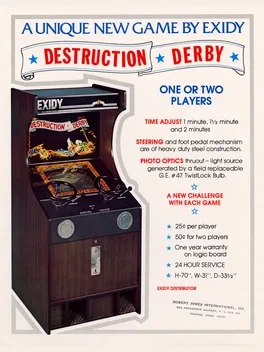
Exidy's first driving game, which was later licensed to Chicago Coin and released as "Demolition Derby". As part of the deal, Exidy stopped production of the game to avoid competing with their new licensee.
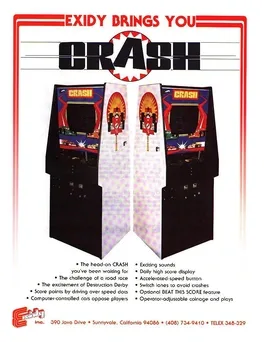
A variation on Gremlin's Head On by Exidy.
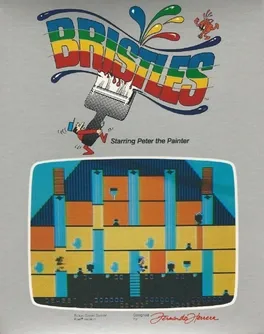
Originally available for home computers in the '80s, developer First Star Software has ported Bristles to the Atari 5200. Featuring eight different game screens and six levels of platforming action, players must attempt to paint a house while avoiding Bucket Chucker and his Flying Half-Pints. Only 100 copies of Bristles were produced, and were first made available at the 2004 Classic Gaming Expo.
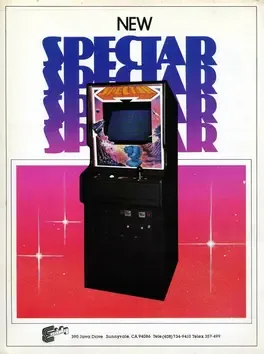
Spectar, released by Exidy in 1980, is the follow-up of Targ. Gameplay is apparently unchanged, you control a vehicle called Whummel into a 9x9 grid maze, chasing down, and being chased by, the alien invaders. Targs have evolved into the more dangerous Rammers, and Spectars appears more often, shooting at player's ship. You use a 4 way joystick to guide your vehicle in the maze, and a pushbutton to shoot at enemies. Up to two players can alternate in gameplay. The most noticeable difference from his predecessor is that to complete a level you must now collect all the gems in the maze, in a Pacman-like game. Rammers and Spectars continue to appear from flashing pods, so you cannot rest and plan your course easily, or you will be overwhelmed by the alien force. Graphic is highly improved compared to his predecessor: the maze now has barricades that must be avoided or can be used as a shielding against the enemies, and has ten environement settings, changing from the "square-block town" of Targ to a city, a forest, a lunar landscape and many more. The enemies too are smarter and faster, and the fact that they go on spawning from the pods makes the game a even more frenzy challenge.
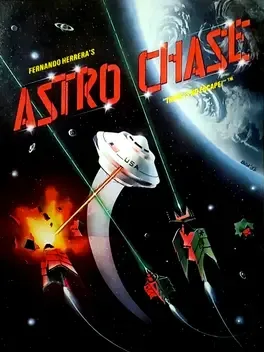
Astro Chase is a multidirectional shooter written by Fernando Herrera for Atari 8-bit computers. It was published by First Star Software in 1982 as the company's first game. Parker Brothers licensed it, releasing cartridge versions for the Atari 8-bit family and Atari 5200 console in 1983 and a Commodore 64 version in 1984. Exidy licensed it for arcade use with its Max-A-Flex cabinet.
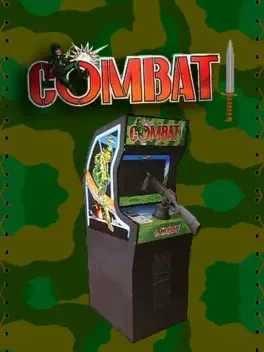
Arcade shooter.
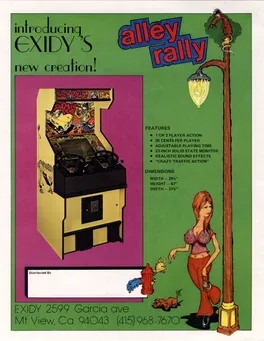
Car racing through crazy traffic.
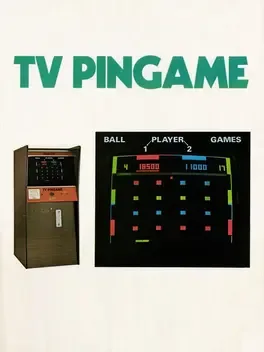
A pinball game where a ball and paddle are used to knock out bumpers, hit pockets and a moving target at the top of the screen to score points. Keep ball in play by bouncing it back up and knock out all the targets for bonus points. It has been produced under different names by Chicago Coin, Exidy and Midway Manufacturing Co.
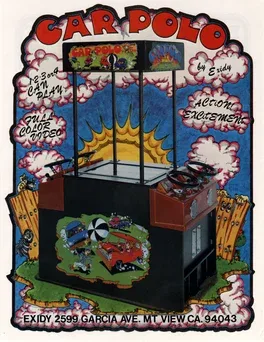
Car Polo is a Sports game, developed and published by Exidy, which was released in 1977.
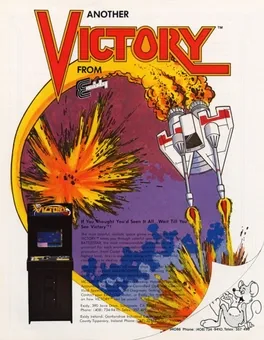
Victory is a game which you control your Battlestar to destroy an alien force which has overrun your planet. This force has installed radar and quark silos on your planet and use their deadly armada to drop paratroopers to the surface to release the quarks. All is not lost however as your Battlestar is equipped capable lasers and shields as well as the “Doomsday Device”. This game was released by Exidy in 1982 and programmed by Vic Tolomei. Your controls are a spinner and 4 lighted buttons (Thrust, Fire, Shield and Doomsday). The hardware for this game is impressive for its time, containing multiple processors and speech/audio chips which add very much to the game experience. Later, there was an upgrade kit that was sold to convert Victory games to a game called “Victor Banana”, changing the in-game graphics to match a more comical theme.